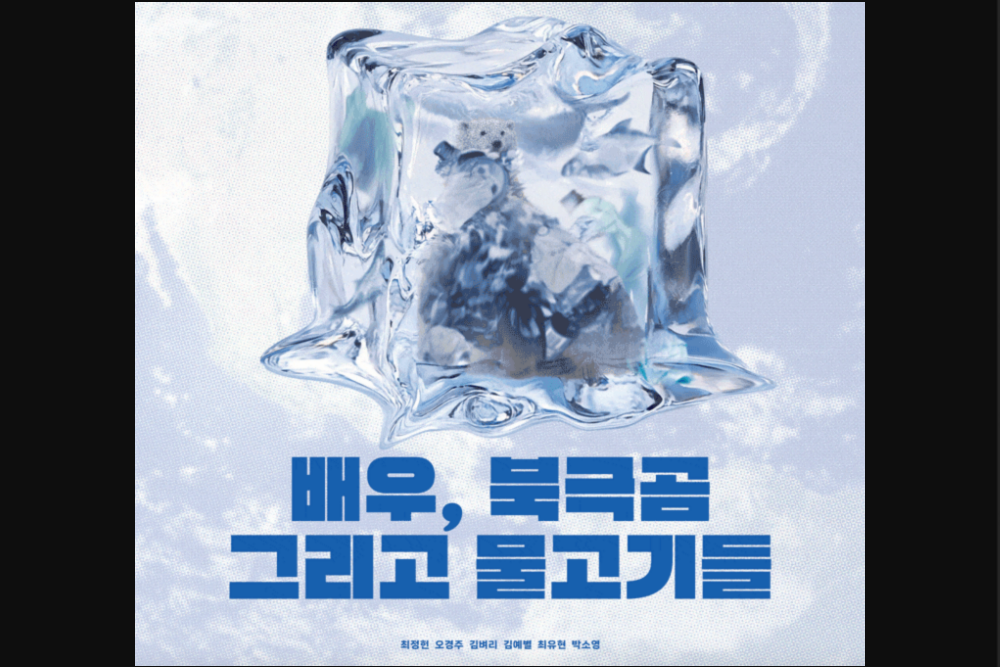A long-haired man dressed entirely in black claps his hands and stomps his feet as he dances flamenco. Beside the intensely moving dancer, like part of the background, sits a solo guitarist. The fast and powerful sounds pouring from the guitar, combined with the dazzling movements of the male solo dancer, instantly take over the vast hall of the Museo del Prado. The flamenco’s fiery energy fills the tightly sealed museum, defying even the scorching midsummer heat of Madrid.
In July 2024, the temperature outside in Madrid, Spain, soared to a scorching 40°C. Around 3 p.m., people seeking refuge from the blazing sun took shelter in the Museo del Prado, surviving the heatwave. The flamenco performance served as a siren of life for those exhausted by the heat. “Come here, enjoy the show, sip some cool water, and cool down your overheated body.” This is part of the Museo del Prado’s “Refúgiate en la Cultura” (Take Refuge in Culture) program.
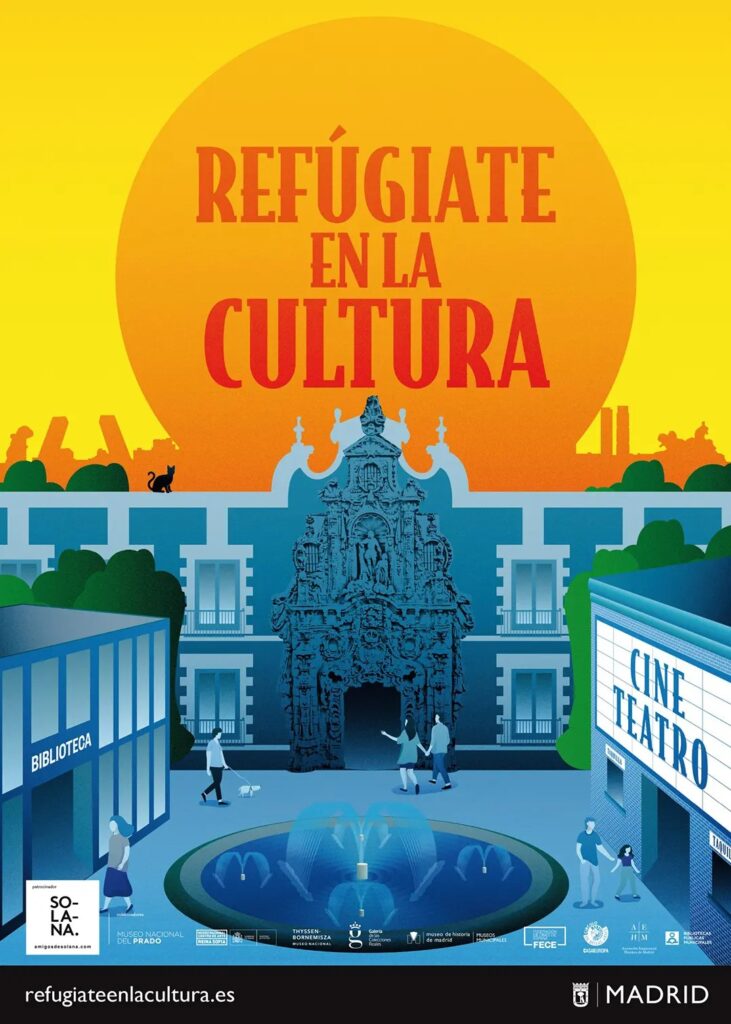
(Source: Madrid City Council Webpage)
“How to Escape the Sun? Come to the Museum”
Disaster shelters, emergency shelters, heatwave shelters… Shelters are places we seek when we feel our lives are at risk. Nothing else matters in the face of life. Because shelters prioritize physical protection of the human body, it was enough for them to function well on a purely practical, hardware level. Without emotion or romance, shelters inevitably feel somewhat bleak. The mental refuge for those seeking shelter is left to each individual. At this point, the Prado Museum asks the question: “What if a shelter and a museum were to come together?”
What if a shelter were a museum? Imagine this: you seek refuge from the scorching heat in a shelter and happen to catch an incredible flamenco performance by a talented dancer. During that moment of refuge, you would feel less anxious and less uncomfortable. Perhaps, completely captivated by the beauty of flamenco, you might forget the blazing heat outside and experience the unexpected charm of a “beautiful shelter” for the first time. The Prado Museum offers both physical and emotional sanctuary to those escaping the heatwave. This unlikely pairing of a shelter and a museum turned out to be surprisingly successful.
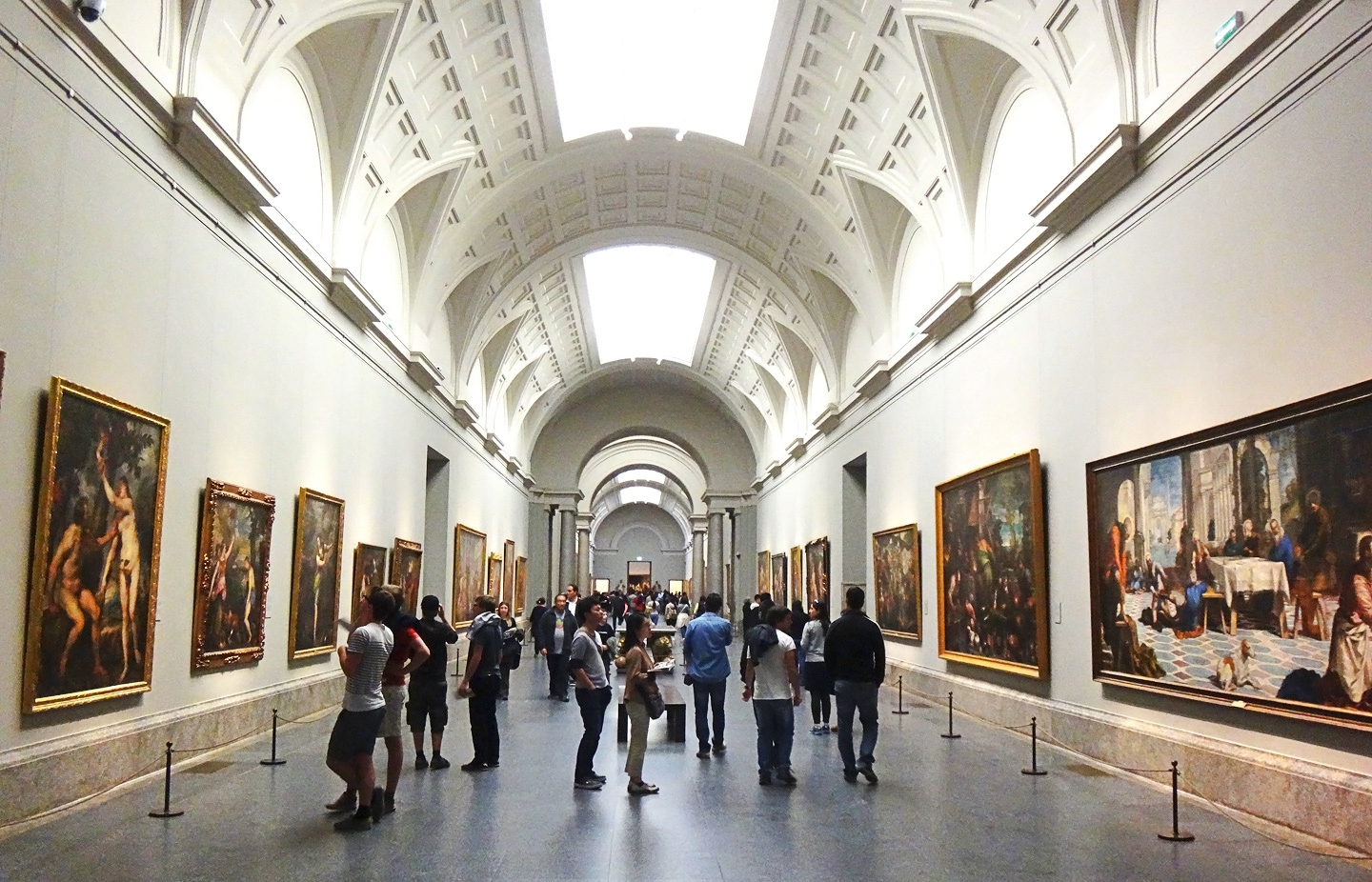
There are practical reasons behind the Prado Museum’s role as a heatwave shelter. Opened in 1819 in Madrid, the Prado houses over 8,000 pieces of Spain’s national art collection. Maintaining the proper temperature and humidity is crucial to preserving these priceless works. Like most major museums, the Prado continuously runs air conditioning to keep indoor temperatures between 18–21°C. This makes it an ideal place for people to seek refuge during extreme heat. Moreover, gathering citizens in air-conditioned spaces reduces the demand for air conditioning in individual homes. This helps alleviate the city’s power overload during peak afternoon hours in summer, preventing blackouts. It also helps mitigate the urban heat island effect. Above all, attracting many visitors is a key priority for museums worldwide—whether they come to escape the heat or to enjoy art.
The Functional Value of Museums’ Infrastructure
Do museums have to be just places for displaying art? The climate crisis assigns new roles to museums. They are now called upon to protect citizens as key urban infrastructure. Art cannot be exempt from the challenges of the climate crisis. Most museums have large, open indoor spaces, making them ideal shelters that can accommodate many people. This also aligns with art’s fundamental purpose of being close to everyday life and breathing with the daily rhythm of society. True appreciation by ordinary people may, in fact, arise from the practical use of the museum’s physical space. Where else can art be so intuitive?
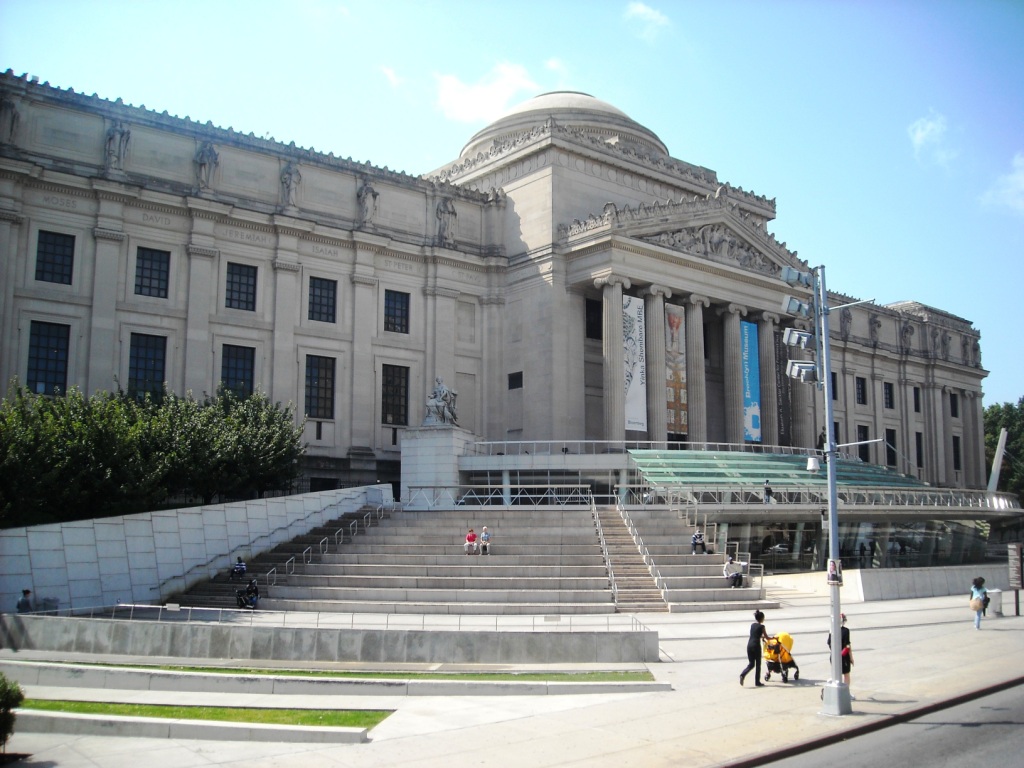
Before the Prado Museum, there was the Brooklyn Museum. Established in 1897 in Brooklyn, New York, this museum boasts a site of over 15,000 square meters, making it the second largest museum in New York City and the first museum in the city to operate as a heat emergency shelter. New York City recognizes any facility as a cooling center if it has air conditioning, can accommodate at least 10 evacuees, has staff on-site, provides drinking water, and is open between 10 a.m. and 3 p.m. As part of the “Beat the Heat Initiative,” the city operates over 500 cooling centers across New York. The Brooklyn Museum, along with Lincoln Center and the Museum of the City of New York, is one of three cultural institutions designated by the city as heat shelters. According to city regulations, the Brooklyn Museum’s heat shelter opens when temperatures reach 35°C (95°F) or higher for two consecutive days, or 38°C (100°F) or higher in a single day. It serves citizens without air conditioning or who cannot afford the electricity costs, especially families with children. Anyone can use the cooling center without purchasing a museum ticket.
A Heat Emergency Shelter with Art that moves the Heart — What a Wonderful Combination!
If the Brooklyn Museum faithfully fulfills the hardware function of a shelter, the Centre de Cultura Contemporània de Barcelona (CCCB) focuses on the fusion of shelter functions and art, much like the Prado Museum. This fusion creates synergy—it’s multiplication, not just addition. As a result, CCCB goes beyond being merely an art center handling artworks; it becomes a shelter for heatwave evacuees, a counseling center that heals weary bodies and minds, a public square for social gatherings, and a dramatic theater telling stories of survival. The harmony between shelter and art enables CCCB to flawlessly perform all these roles at once—going beyond dual roles to triple and quadruple functions.

The CCCB has put considerable effort into fulfilling multiple roles, including serving as a heatwave shelter. It’s not just a matter of opening its doors. To function effectively as a cooling refuge, the CCCB renovated various indoor and outdoor spaces throughout the building. They also organized diverse art events for shelter seekers and especially planned free activities for families. Last summer, the CCCB created shaded areas in the museum’s central plaza and opened the basement, allowing visitors to freely enjoy a variety of video artworks by artists, write postcards, and even try their hand at video editing as part of the interactive experiences offered.
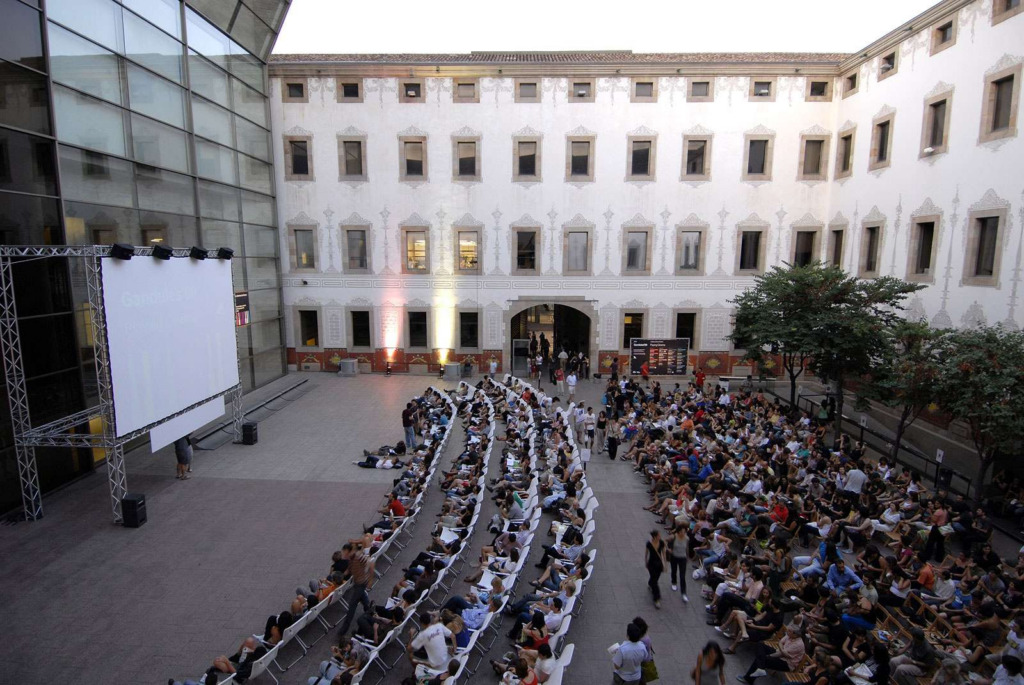
A sticker that reads “Refugis Climàtics” (Climate Shelter) is posted at the main entrance of the CCCB. Though small, the message is clear: not only museum visitors but also heat shelter seekers are welcome to enter confidently without hesitation. You don’t need to explain why you’re here. This sticker signifies that the CCCB is part of Barcelona’s Climate Shelter Network. Barcelona, plagued by heatwaves every year, has established a dense network of climate shelters throughout the city, aiming for every citizen to be able to find a shelter within a 5-minute walk from home by 2030. As of summer 2024, Barcelona has 368 climate shelters, including about 20 arts-related institutions such as the CCCB.
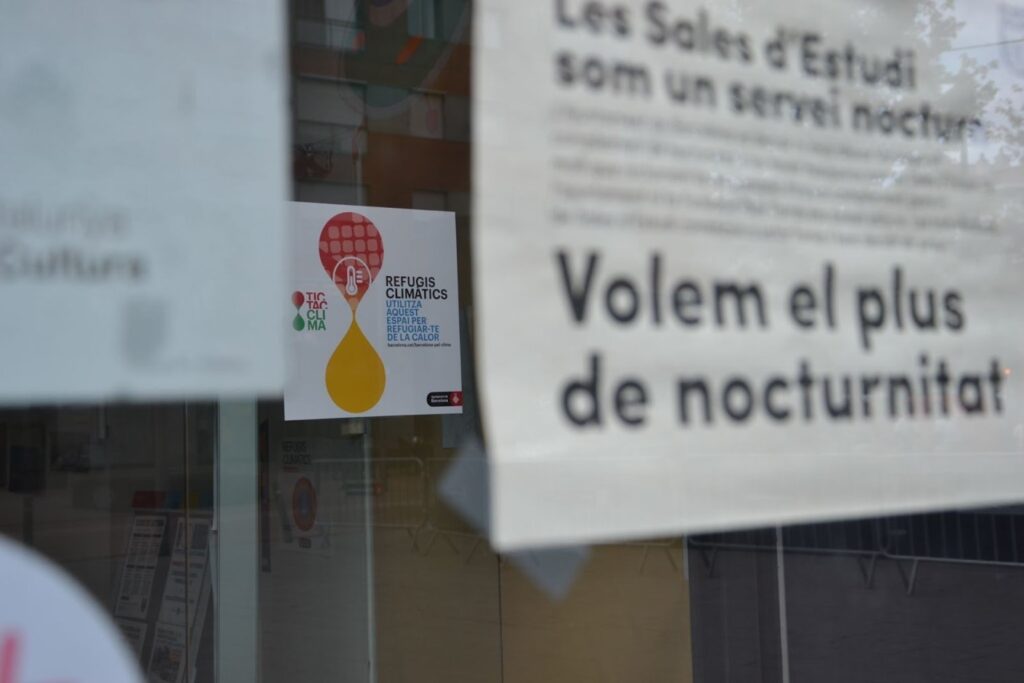
Are Art Visitors and Heatwave Evacuees Different?
Each museum may respond to the climate crisis in different ways, but if they aim to harmonize the roles of museum and shelter, it requires a kind of alchemical bond that goes beyond the physical. This means transforming the museum from a space that offers visitors inspiration, enjoyment, and emotion into a sanctuary that protects life itself. It is a complete shift in purpose. Hosting art visitors and hosting heatwave evacuees are never the same. To merge such fundamentally different roles, an alchemical vision is needed. Only museums that can perform the magic of transforming visitors into evacuees—and evacuees back into visitors—will succeed in this endeavor.
In the era of the climate crisis, both museums and shelters are essential for Homo Ludens—the playing human. There is a genuine need today to break down the boundaries where museums become shelters and shelters become museums. It’s about the true value of spaces that go by many names.
▶ This article is a contribution to the webzine published by the Korea National Oil Corporation.
https://www.knoc.co.kr/upload/EBOOK/sabo/206/sub/sub11.html









